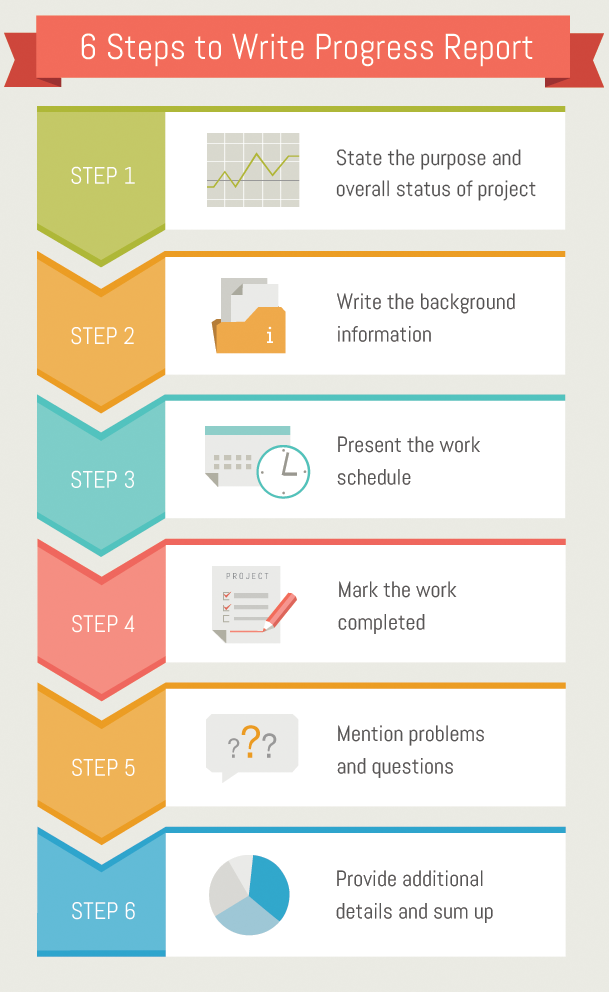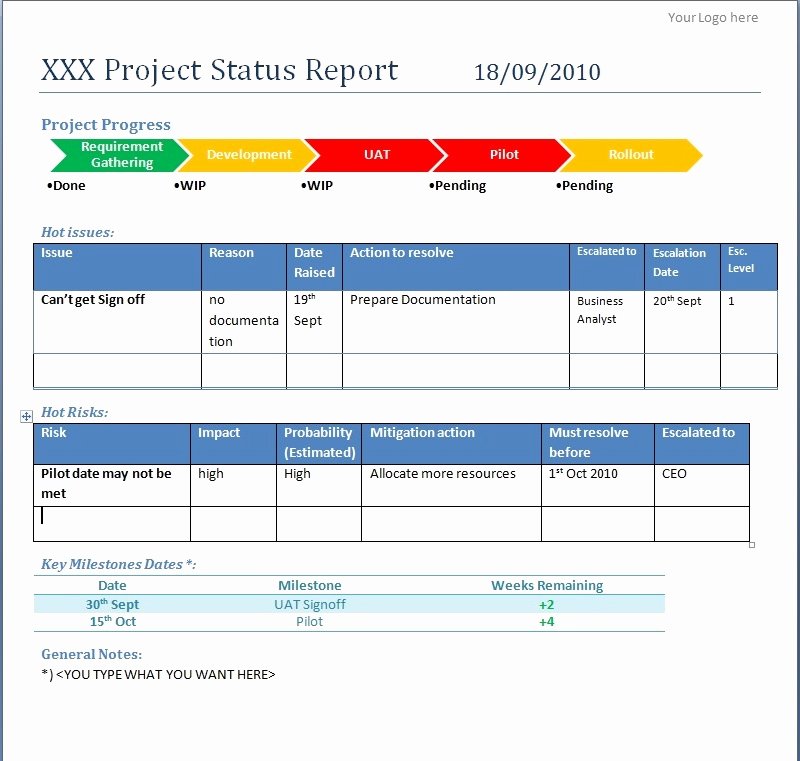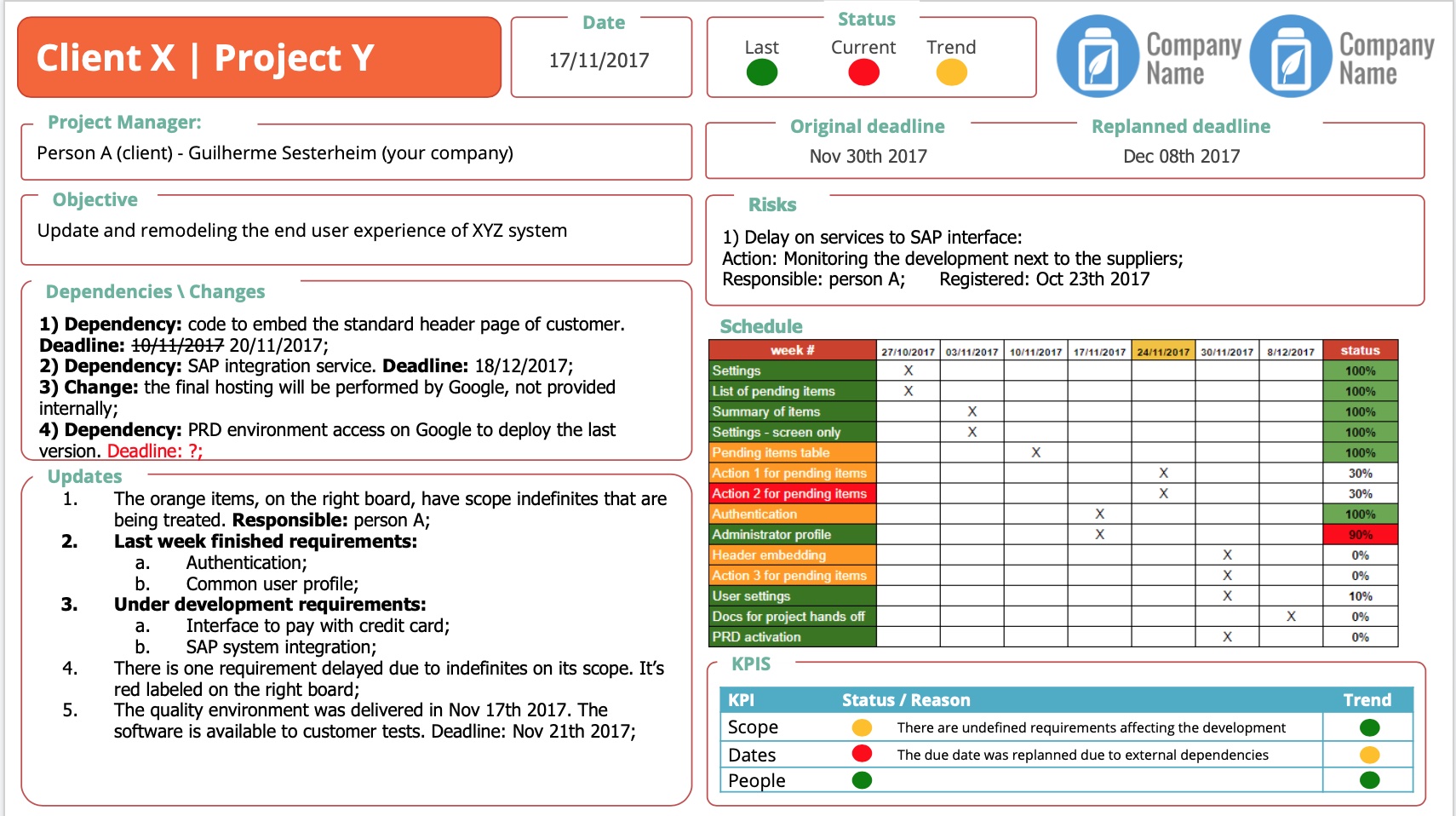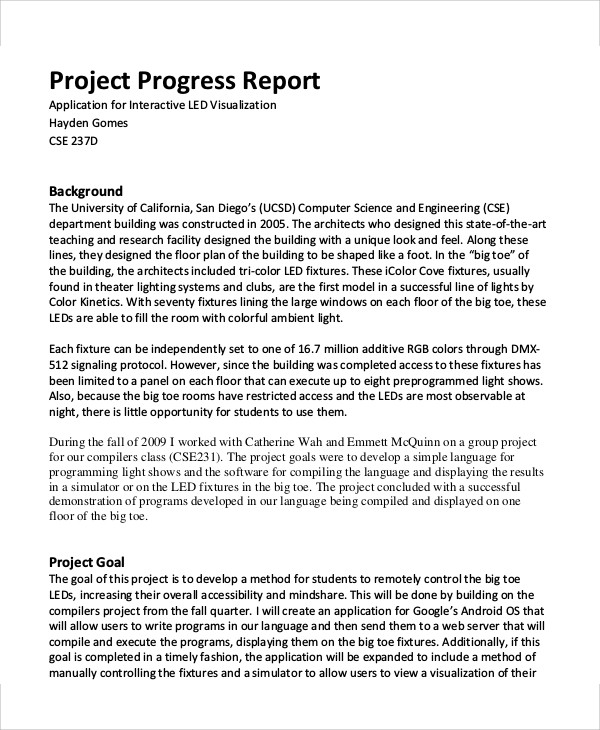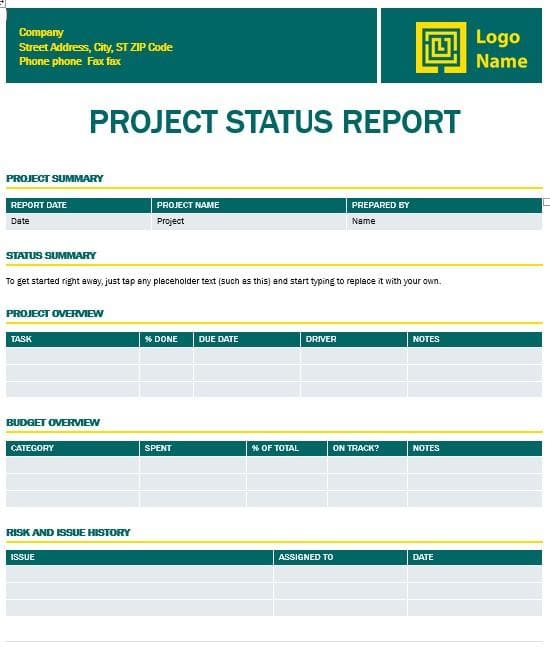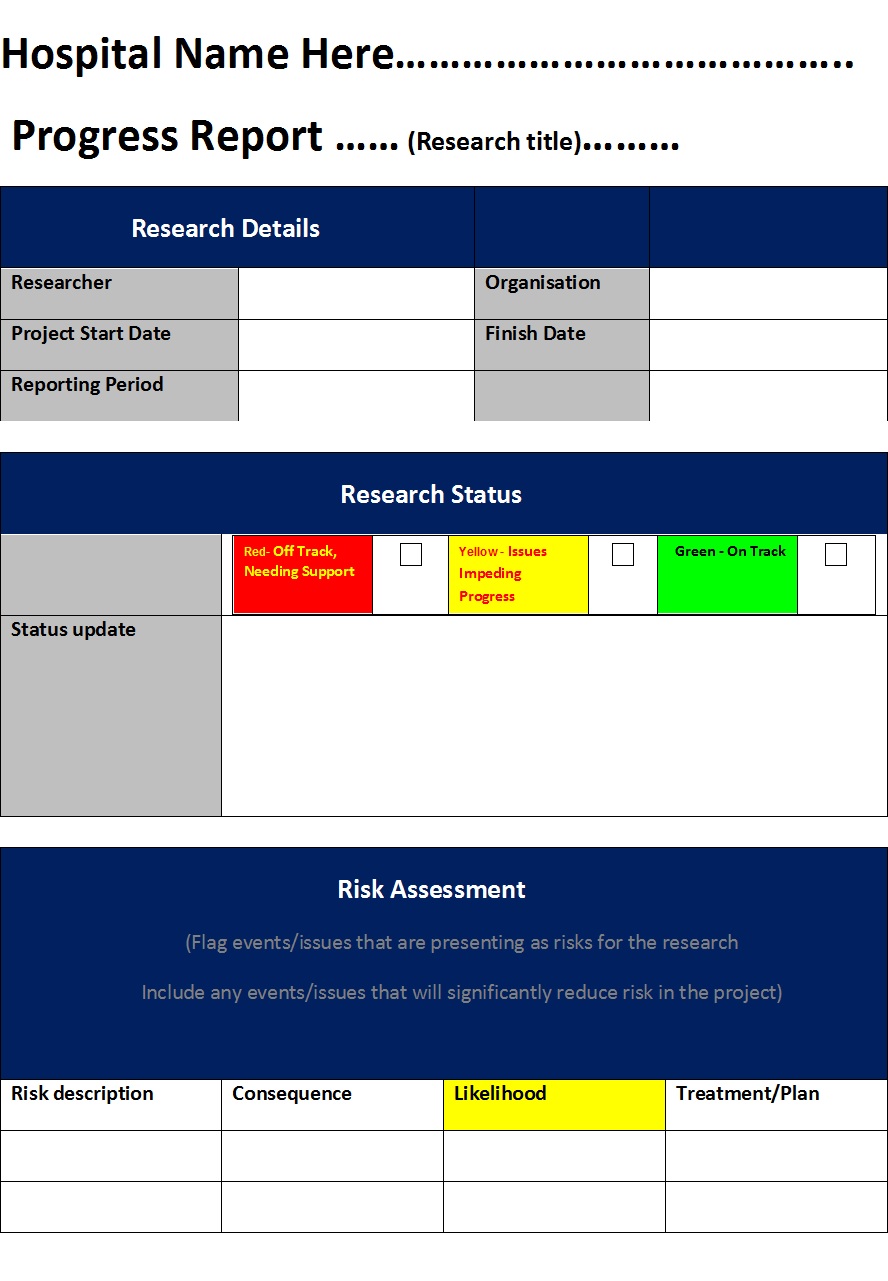Which Of The Following Situations Might Require A Progress Report

In the intricate tapestry of modern project management, accountability reigns supreme. The humble progress report, often perceived as a mere formality, stands as a critical linchpin in ensuring projects stay on track, budgets remain intact, and stakeholders remain informed. But when exactly is this document indispensable, and what scenarios warrant its meticulous creation?
This article will delve into the myriad situations that necessitate a progress report. We'll examine the key indicators, from project size and complexity to stakeholder demands and regulatory compliance, that signal the need for regular updates. Understanding these nuances is crucial for effective communication and proactive problem-solving, ultimately leading to successful project outcomes.
Project Complexity and Scale
Large, complex projects almost universally demand consistent progress reporting. The sheer number of moving parts, stakeholders, and potential risks necessitates frequent updates to maintain control and transparency. These reports act as early warning systems, flagging potential delays or budget overruns before they escalate into major crises.
According to the Project Management Institute (PMI), projects with multiple dependencies and extended timelines benefit significantly from regular progress reporting. This allows for course correction and resource reallocation as needed. Think of infrastructure projects, software development initiatives with multiple modules, or large-scale marketing campaigns.
Consider the construction of a new highway. Regular progress reports detailing milestones achieved, materials used, and potential roadblocks are essential for keeping the project on schedule and within budget. These reports are usually submitted monthly, or even weekly depending on the project criticality.
Stakeholder Expectations and Governance
The level of stakeholder engagement directly impacts the need for progress reports. High-profile projects or those involving numerous stakeholders, including investors, government agencies, or the public, invariably require frequent and detailed updates. These reports serve to keep stakeholders informed, address concerns, and maintain trust in the project's leadership.
Corporate governance structures often mandate regular reporting on significant projects, ensuring accountability to shareholders and boards of directors. This is particularly true for projects with a high financial risk or those that are critical to the company's strategic objectives. Public sector projects are also subject to greater scrutiny and thus necessitate comprehensive progress reports.
Imagine a publicly funded renewable energy project. Taxpayers, government officials, and environmental advocacy groups all have a vested interest in the project's success. Regular progress reports, accessible to the public, are essential for ensuring transparency and maintaining public support.
Regulatory Compliance and Legal Requirements
Projects operating within regulated industries, such as pharmaceuticals, finance, or healthcare, often face strict reporting requirements. These regulations may mandate specific reporting formats, frequencies, and content. Failure to comply can result in penalties, fines, or even project shutdowns. Projects that involve government funding also typically have stringent reporting mandates.
The pharmaceutical industry, for instance, requires detailed progress reports during clinical trials to ensure patient safety and data integrity. These reports are submitted to regulatory agencies like the Food and Drug Administration (FDA). Similarly, financial institutions must provide regular updates on risk management initiatives to comply with regulatory requirements from the SEC and similar authorities.
If a construction project involves disturbing protected wetlands, environmental regulations likely require regular monitoring and reporting. This reporting can include documenting soil erosion control measures and water quality testing to demonstrate compliance with environmental protection laws.
High-Risk Projects and Contingency Planning
Projects with inherent risks, whether technical, financial, or operational, demand close monitoring and regular reporting. These risks could include technological uncertainties, market volatility, or potential disruptions to supply chains. Progress reports, in these cases, should focus on identifying and mitigating potential threats.
Contingency planning is often a crucial element. Progress reports should detail how identified risks are being managed and what contingency plans are in place should those risks materialize. This proactive approach helps to minimize the impact of unforeseen events and keep the project on track.
Consider a project developing a new, unproven technology. Progress reports would focus on highlighting the technical progress being made. It would also include potential risks, such as technical hurdles, and how the project managers are addressing those risks.
Projects Requiring External Funding or Investment
When projects rely on external funding, such as venture capital, bank loans, or grants, progress reports become a vital tool for maintaining investor confidence. Investors need assurance that their money is being used effectively and that the project is on track to deliver the expected return on investment. These reports provide the necessary transparency and accountability.
Investors will scrutinize project milestones, budget adherence, and market traction. Regular progress reports, including financial statements and key performance indicators (KPIs), are essential for keeping investors informed and engaged. These reports may also highlight progress made in securing intellectual property or regulatory approvals.
A startup seeking venture capital funding would need to provide regular progress reports to its investors. These reports should detail progress in product development, customer acquisition, and revenue generation. The reports would also outline how the funding is being used to achieve these milestones.
Projects Recovering from Setbacks
When a project encounters significant challenges or falls behind schedule, increased scrutiny and frequent progress reporting are essential. The goal is to regain control, identify the root causes of the problems, and implement corrective actions. These reports serve as a tool for monitoring the effectiveness of those actions and tracking progress towards recovery.
Progress reports in this situation should be brutally honest and transparent. They must clearly articulate the issues encountered, the impact on the project, and the specific steps being taken to get back on track. This includes revised timelines, budget adjustments, and resource reallocation.
If a marketing campaign experiences a significant drop in engagement, a recovery plan with detailed progress reporting is crucial. The reports should identify the reasons for the decline and track the impact of any changes to the campaign strategy.
Conclusion
The situations that demand progress reports are diverse and varied, but the underlying principle remains constant: effective communication and accountability are paramount to project success. By carefully assessing project complexity, stakeholder expectations, regulatory requirements, and potential risks, project managers can determine the appropriate frequency and content of progress reports. This proactive approach ensures that projects stay on track, resources are used efficiently, and stakeholders remain informed and engaged, ultimately leading to desired outcomes. Adopting a diligent reporting strategy isn't just a bureaucratic exercise; it's an investment in project success and stakeholder confidence.
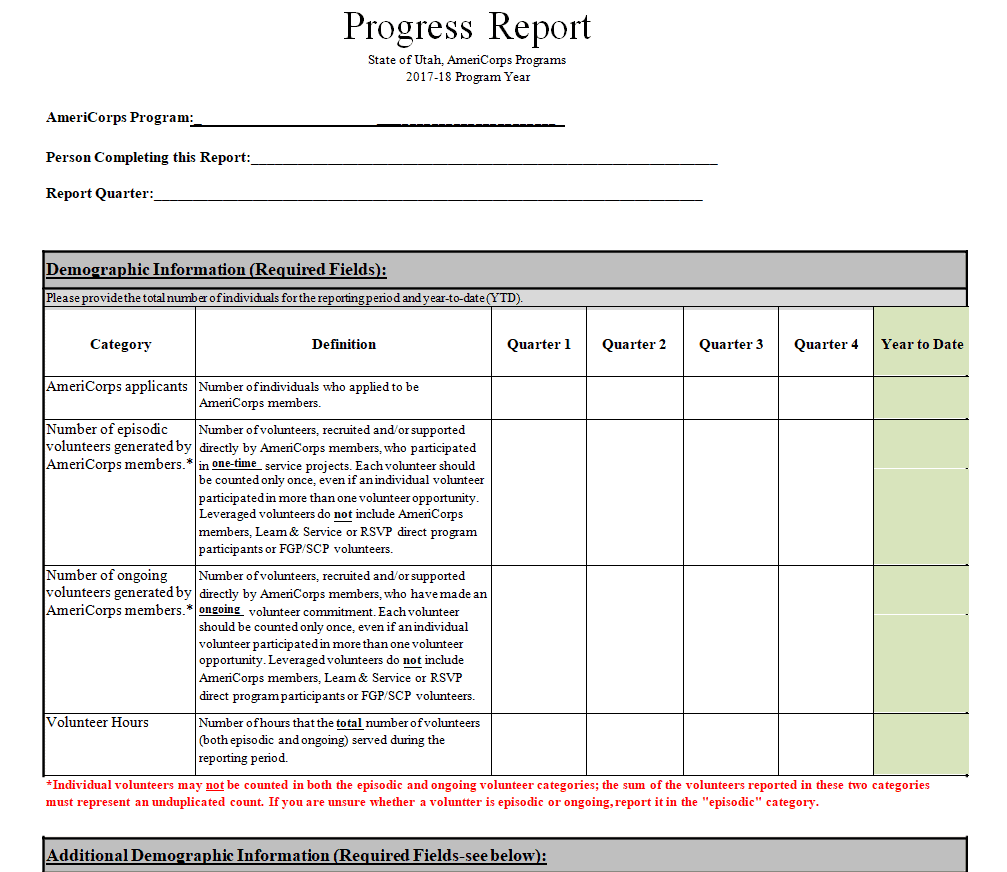
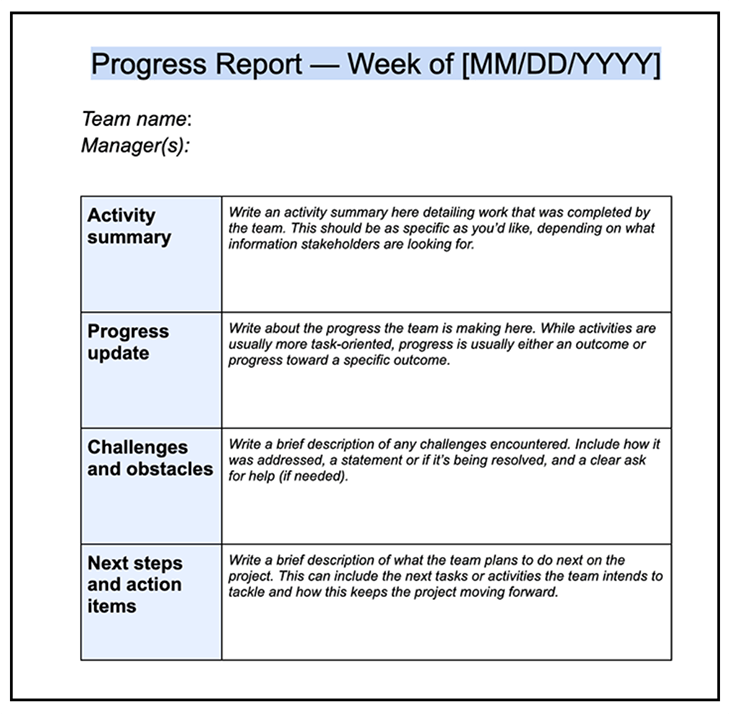
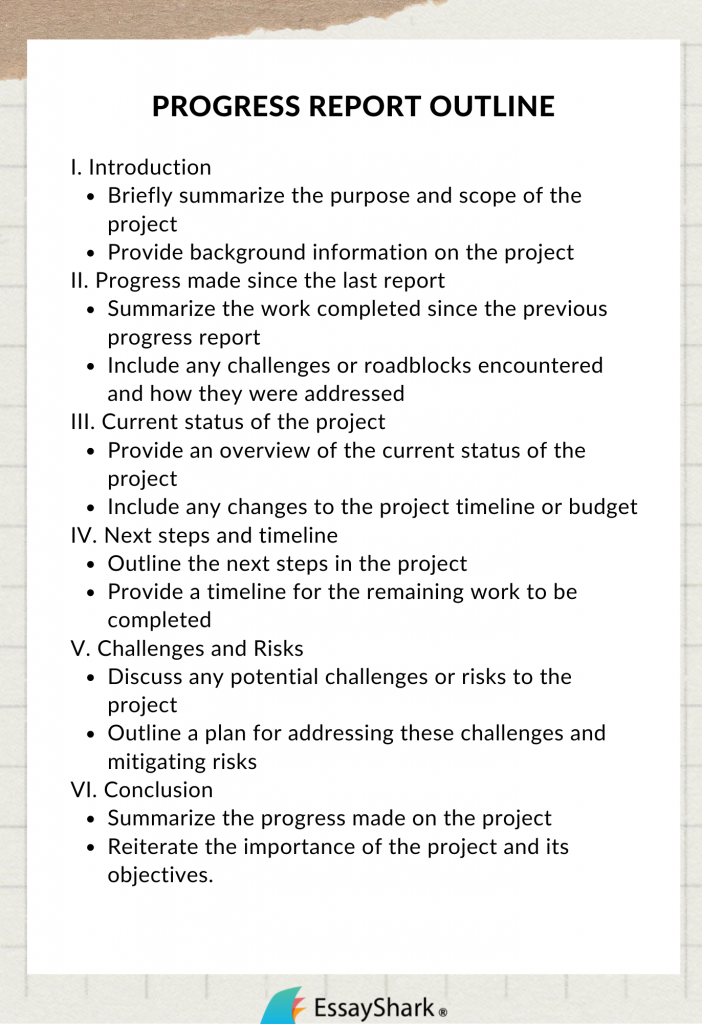
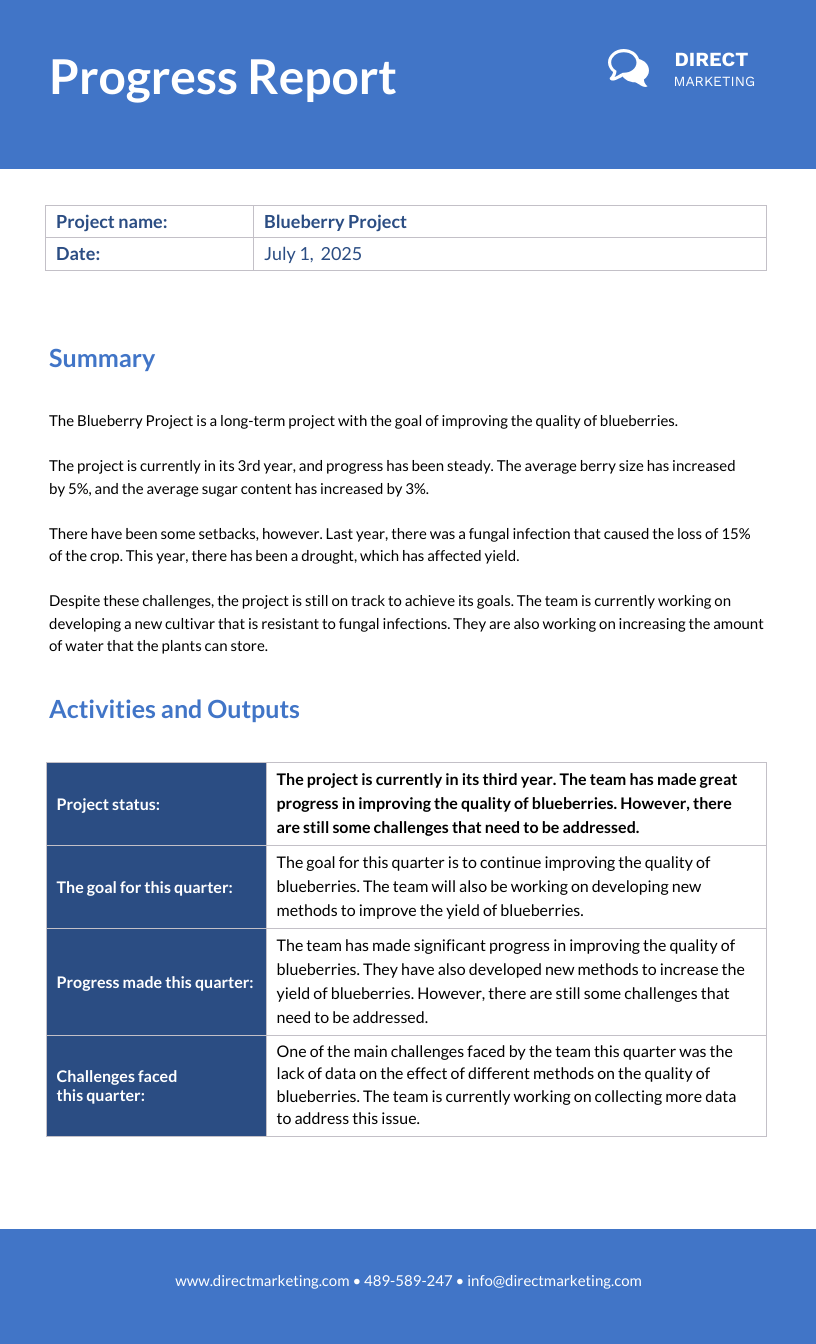


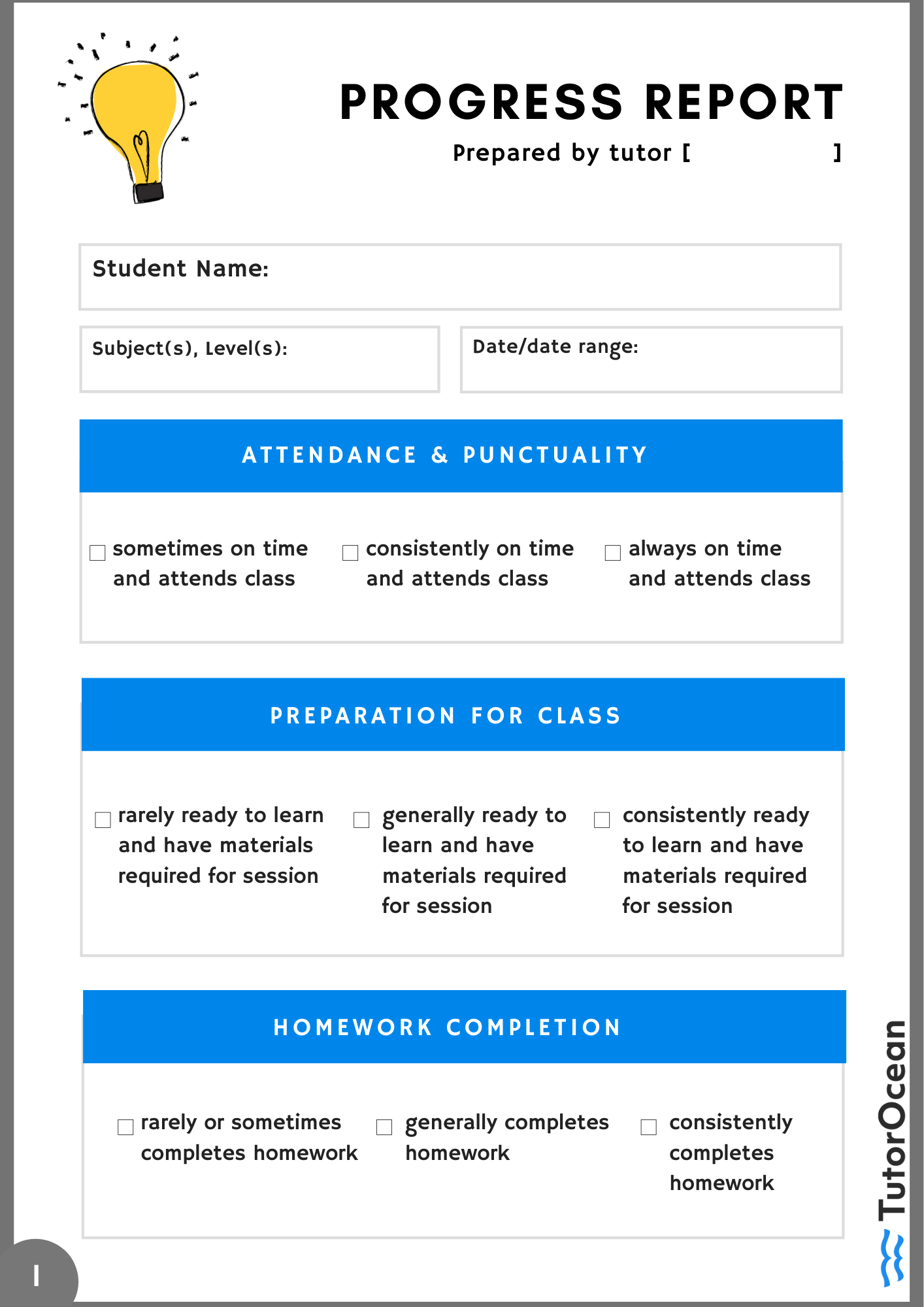
.jpg)

